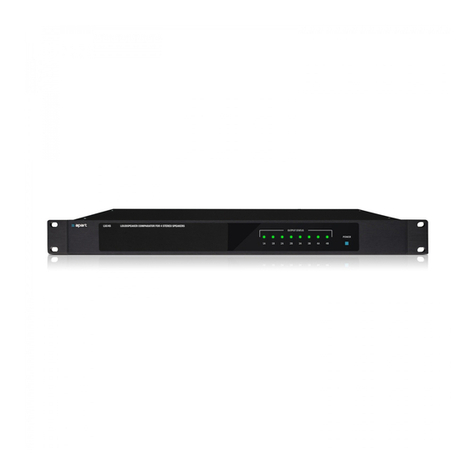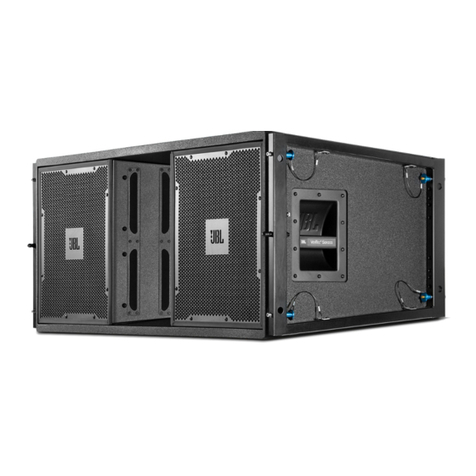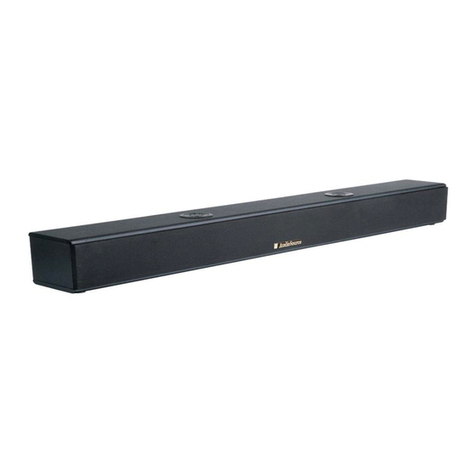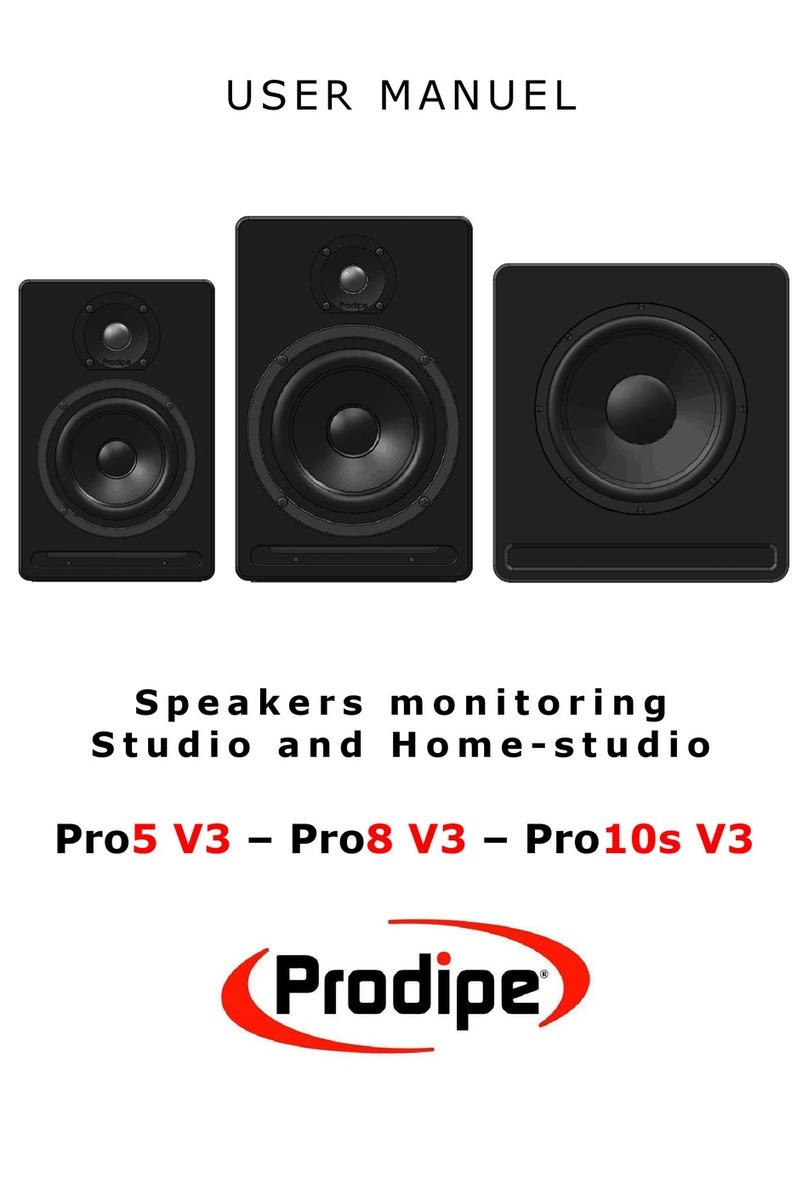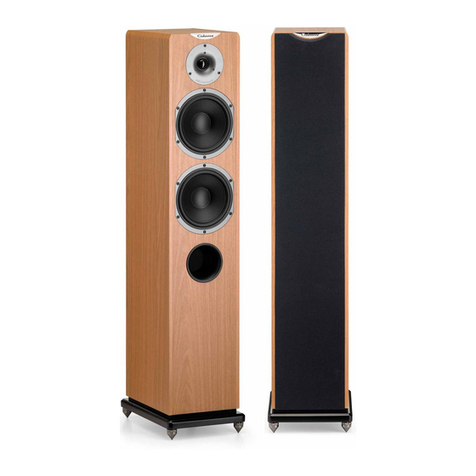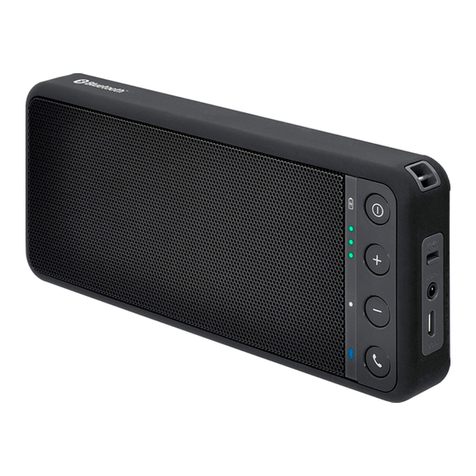Chario ACADEMY S SERIES User manual

IT
USER MANUAL
ACADEMY 'S' SERIES

2
USER MANUAL
ENGLISH

3
EN
/INDEX/
ASSEMBLY
page 4
CONNECTION CABLE
page 5
ELECTRICAL CONNECTION
page 6
AMPLIFIER
page 8
LISTENING ROOM
page 9
SPEAKER POSITIONING
page 10
STRAY MAGNENITC FIELDS
page 12
MAINTANCE AND WARRENTIES
page 13
STAND ASSEMBLY
page 14

4
Assembly/
Only for Serendipity and Sovran models.
Place the 4 supplied dampers into the slot on the lower part of the
speaker and carefully place the top until full contact of the two parts.

5
EN
Connection cable/
The best connection is obtained by using short lengths of board
cables. The cables should always be the bipolar-multithread type (in
no case should rigid single thread cable be used), preferably board,
such as the cables for hi-fi connections normally available in the
specialized shops. For those who wish to use ordinary electric wire, it
is advisable to keep to the following minimum requisites:
Distance
Amplifier/Speaker
Up to 5 meters
From 5 to 10 meters
Over 10 meters
Minimum Cable
Cross Section
0,75 sq. mm
1.00 sq. mm
2.00 sq. mm

6
Electrical
connection/
All connections should be made with the audio equipment
switched off.
The amplifier terminals are marked: red for the positive pole and
black for the negative. The input terminals of Chario speakers are
clearly marked with the indications + for the positive and – for the
negative inputs.
While connecting the amplifier to the speakers great care should be
taken not to confuse the polarities.

7
EN
Electrical
connection/
For Serendipity and Sovran models use the supplied cable to connect
the low to the high part.
All models can be connected in bi-wiring or bi-amping, in Sonnet
model it is enabled simply by removing the two jumpers.
N.B.
Inversion of the polarities will NOT damage the
speakers in any way. The quality of the sound will,
however, be impaired (with a considerable loss of the
power), and therefore the stereo image will be altered
with a difficult location of the sources.

8
It is possible to use more powerful amplifiers than those suggested:
in this case, however it is necessary to be careful when regulating the
volume in order to avoid the speakers damage by sending them a too
powerful signal.
It is also advisable, if using a low powered amplifier, not to keep the
volume switch at the maximum level (especially if the tone controls
are changed) on order to avoid serious damage to the tweeters.
Generally, the recommended power amplifier has to be directly
proportional to the size of the listening room. It should have a
minimum electrical power of 1W each cubic meter. The power amplifier
is suitable for an impedance of 4 ohm.
For connections between source and amplifier, refer to the manuals
supplied with the devices.
Amplifiers/

9
EN
The environment have a fundamental importance to determinate the
quality of listening. The shape of the room , ornaments, furniture,
upholstery, curtaining, carpets, glasses and anything else do
determine the sonic performance of your living room.
The room should therefore be optimized by moving the furniture and
"calibrating” the reflecting and absorbing surfaces, in order to obtain
as much “acoustic neutrality” as possible.
To increase the performance of the room please contact acoustic
specialists for home entertainment.
Listening room/

10
Once your room has been
optimized, it is necessary to
find the right position for
the speakers within it. Also
in this case (because of the
variety of possible solutions)
it is advisable to proceed
by tries, experimenting the
different positions, but always
remembering that:
- There should not be any bulky
object between the speakers and
the listener.
Positioning the
speakers/
- There should be at least 1
meter between the listener and
the wall behind him.
- To optimize the distance
between speakers increase
the distance between them
gradually, until you’ll hear a
"hole in the middle": that’s the
allowed maximum distance, so
just reduce it a bit.
- The speakers should be slightly
toed in.
1,5 m
1 m
0,5 m
0,5 m

11
EN
- Where possible the speakers
should be at least 50 cm from
the side walls.
- Small Loudspeaker systems
should be placed on shelves (if
this is not possible, put them
on a stand) so that the tweeter
should be more or less at the
same level of the listener's ears.
If, for any reason, some of these
conditions cannot be met, it is
possible to modify the sound by
regulating tile tone controls or
by using an equalizer. It should,
however, be remembered that
in these cases more benefit is
achieved by attenuating the
frequencies rather than by
increasing them.
All the speakers can be use in
multichannel configuration.

12
Stray magnetic
fields/
The speaker drive units create static stray magnetic fields that extend
beyond the boundaries of the cabinet. We recommend you keep
magnetically sensible devices (CRT television and computer screens,
computer discs, audio and video tapes, swipe cards and the like) at
least 0.5m from the speaker. OLED, LCD and plasma screens are not
affected by magnetic fields.

13
EN
Maintance and
warrenties/
Please take the time to carefully read and follow these important
safety instructions.
Please save this sheet for future reference.
WARNING:
Do not expose this appliance to dripping or splashing, and do not place
objects filled with liquids, such as vases, on or near the appliance. As
with any electronic products, use care not to spill liquids in to any part
of the system. Liquids can cause a failure and/or fire hazard.
Do not place any free flames sources, such as lighted candles, on or
near the appliance.
Do not install near any heat sources such as radiators, heat registers,
stoves, or other appliances (including amplifiers) that produce heat.
Consult the dealer or an experienced radio/TV technician for help.
Clean only with a dry cloth.
This product contains magnets, which can be harmful to pacemaker
wearers.
CAUTION
Make no modifications to the system or accessories.
Unauthorized alterations may compromise safety,
regulatory compliance, and system performance.
Guarantee will be invalidated as well.

14
Stand Assembly/

15
EN
Stand Assembly/
PARTS FOR 2 STANDS:
Threaded rod (8 pcs)
Hollow screw for foot fixing (16 pcs)
Screw for cabinet / top plate fixing (4 pcs)
Stem (2 pcs)
Metal foot (4 pcs)
INSTRUCTIONS:
Tighten 4 hollow screws on one side of 4 threaded rods.
Combine a foot with its own stem side and pass the threaded rods into
the through hole to the contact of the screws.
Join the other foot and the stem then tighten the last 4 hollow screws
on the threaded rods.
Place the speaker on the upper base and align the holes for the
screws then tighten the provided screws.

2
MANUALE
UTENTE
ITALIANO

3
IT
/INDICE/
ASSEMBLAGGIO
pag. 4
CAVI DI COLLEGAMENTO
pag. 5
COLLEGAMENTI ELETTRICI
pag. 6
AMPLIFICATORI
pag. 8
AMBIENTE D'ASCOLTO
pag. 9
POSIZIONAMENTO DEI DIFFUSORI
pag. 10
CAMPI MAGNETICI DISPERSI
pag. 12
PULIZIA, MANUTENZIONE, NORME DI SICUREZZA
pag. 13
ASSEMBLAGGIO STAND
pag. 14

4
Assemblaggio/
Valido solo per i modelli Serendipity e Sovran.
Posizionare i 4 smorzatori in dotazione negli appositi alloggi della
parte inferiore del diffusore e appoggiare delicatamente la parte
superiore fino al completo contatto delle due parti.

5
IT
Le connessioni migliori si ottengono con collegamenti brevi e cavi
di generoso diametro. I cavi devono essere sempre di tipo bipolare-
multi filare (in nessuno caso si deve usare cavo unipolare rigido),
possibilmente di ampia sezione, come i cavi per collegamenti hi-fi
correntemente reperibili presso i rivenditori specializzati.
Per coloro che intendono utilizzare normali conduttori elettrici, è
bene fare riferimento ai seguenti requisiti minimi:
Cavi di
collegamento/
Distanza
amplificatore/diffusore
Fino a 5 metri
Da 5 a 10 metri
Oltre 10 metri
Sezione minima
del conduttore
0,75 mm2
1.00 mm2
2.00 mm2

6
Tutti i collegamenti devono essere effettuati con i componenti
dell’impianto spenti.
I morsetti di uscita degli amplificatori sono contrassegnati dal colore
rosso per il polo positivo e dal colore nero per il polo negativo.
I morsetti di ingresso dei diffusori Chario riportano chiaramente
l’indicazione + (per il polo positivo) e - (per il polo negativo).
Durante il collegamento amplificatore-casse acustiche, rispettate
scrupolosamente la corretta polarità di ingresso.
Collegamenti
elettrici/
Other Chario Speakers manuals
Popular Speakers manuals by other brands
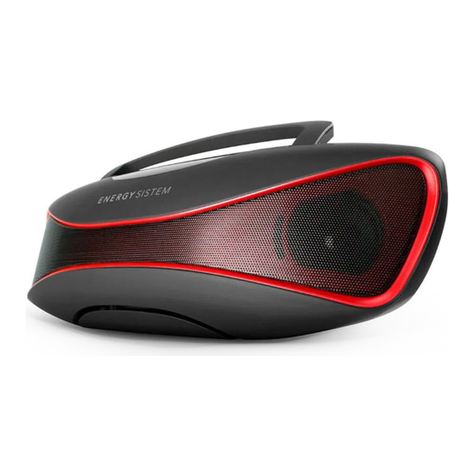
ENERGY SISTEM
ENERGY SISTEM Music Box Z6 manual
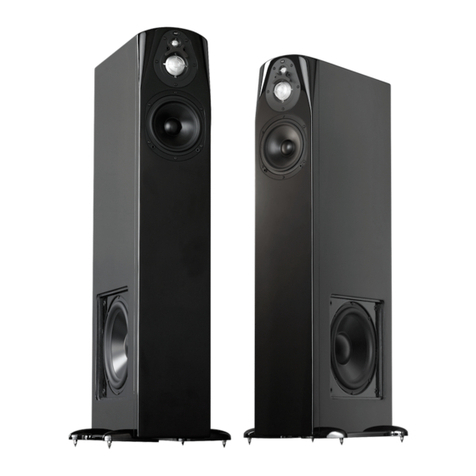
NHT
NHT Classic Four Setup guide
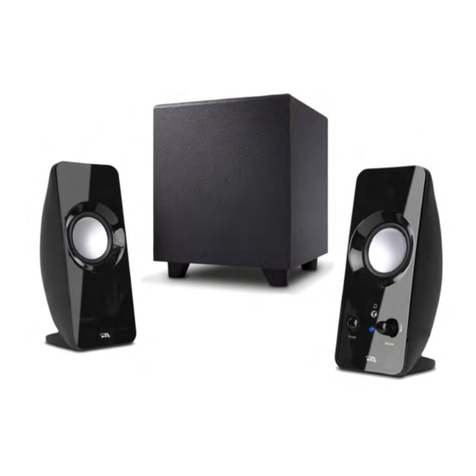
Cyber Acoustics
Cyber Acoustics AC-2.1A owner's guide
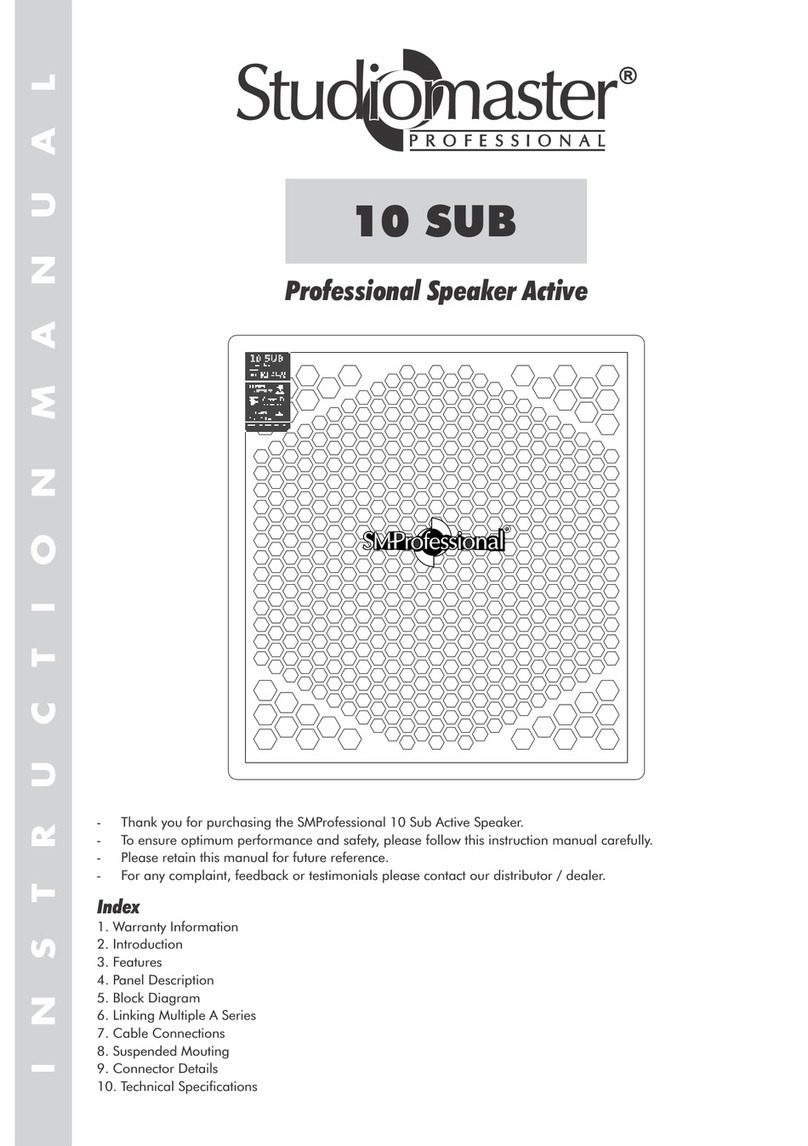
Studiomaster Professional
Studiomaster Professional 10 SUB instruction manual
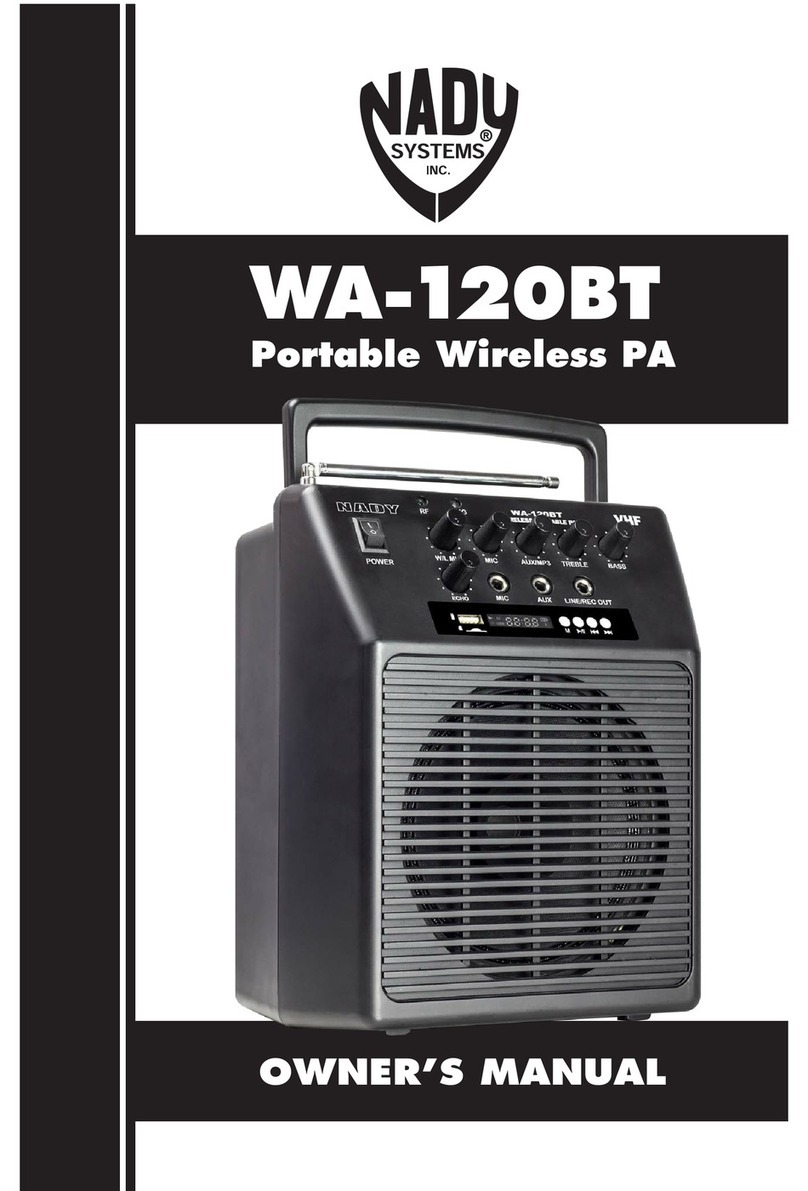
Nady Systems
Nady Systems WA-120BT owner's manual

Power Dynamics
Power Dynamics BE42T Series instruction manual


